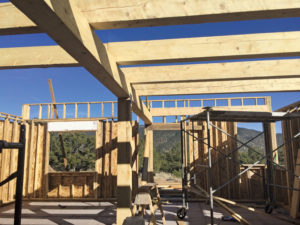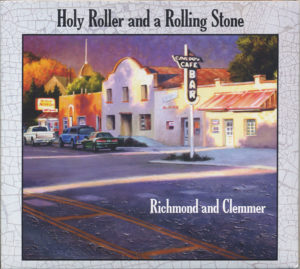By John Mattingly
Note: This is the second of a three-part series looking at the tension points between economic growth and environmental conservation.
Growth: Like gravity, it’s the law.
Though there are solid reasons for both adoring and admonishing growth, it’s actually circulating in our economic bloodstream. Our entire economic structure, from Generally Accepted Accounting Principles (GAAP) to the Tax Code, to laws governing financial transactions, is all tilted – sometimes dramatically – toward favoring growth versus sustainability.
1. Generally Accepted Accounting Principles, or GAAP, has yet to give ledger status to externalized costs and benefits. For example, the cost of owning a vehicle accounts for the asset itself, maintenance, fuel and salvage, but attributes nothing to the cost of dumping our emissions into the air, let alone the cost of bringing fuel to the pump. These costs are “externalized,” and like “rogue killers,” they remain at large.
Nor does GAAP account for the externalized benefits of owning a vehicle, like convenience, freedom, image and spirit. Because externalized costs and benefits are real but unaccounted for, our sense of value is distorted, and in that context of unaccountability, growth is not only enabled, it’s encouraged. Growth gets the blessing of a profit from GAAP, while failing to account for externalized costs. The same is true of alternative energy sources when compared to fossil fuels: The real costs of fossil fuels are not accounted for, nor are the real benefits of clean energies.
Part of the reason externalized costs and benefits are difficult to ledger is that they are difficult to quantify, even though measurement technology is making strident advances, so a carbon tax could be imposed on vehicles with a high degree of fairness based on real time data. That, of course, is unlikely because one of the great things about America is the cheap energy. We deserve it.
2. The U.S. Tax Code also encourages growth. Students of the Code know that it creates two paths: Either you own assets and pay little tax, or you work for wages and pay a lot of taxes. Owning assets gives you depreciation, a concept that enjoys ledger status in GAAP and opens the door to a truly vast trove of tax advantages.
The original rationale behind depreciation was simple; for example, you buy an asset for $10,000 that has a ten-year life. Every year you set aside $1,000 so that when it comes time to replace the machine, you take the $10,000 saved and add it to the salvage value of the old asset and replace the old machine. Someone had the idea to argue that because the yearly contribution to savings is idle, it should be allowed as a cost of doing business, and thus a valid deduction. But no one checked to see if you were actually saving that $1,000 a year. No, you need not do that.
And then, as creativity blossomed, depreciation became a tool for stimulating growth in several ways. First, it freed up tax dollars for further investment because depreciation is a non-cash deduction. Second, the depreciation schedules were flexible enough that an asset could be put on a three-year, 10-year, 20-year or even a one-year schedule. This encouraged the purchase of assets because the entire value of the purchase could be deducted from income. So why not get a bigger asset? It only makes sense.
Finally, depreciation actually stimulates inflation. Instead of the $10k, 10-year asset being worth $1K in 10 years, it might be worth $8-9K, maybe even $10K in trade for the new machine which now costs $20k. Do the math.
3. The combination of growth-bias incentives in GAAP and the U.S. Tax Code are further protected by a nexus of laws governing financial activity, all of which are there to make growth inflate. The culture is grow or die. Get bigger or wither. Be all you can be. Live The Dream.
The result is that the financial sector is now about a third of our economy, and they are so driven by growth that they now drive much of the political action in the U.S. With the current national debt ballooning, we are now committed to three or four percent annual growth to avoid a reckoning. This will likely push the growth orientations of the system into a kind of eerie overdrive. The party will go on for as long as we are able to ignore the fact that this means the rate of resource consumption will double every 25 years, meaning we will need to grow several more Earths to continue as a species with a growing population.
All of the above relate to us here in Central Colorado, right here in River City, because all assessments of how to balance economic growth with conservation are constrained by the incentives inherent in the system.
For example, open space is an externalized benefit. To monetize it, there are various types of easements that can be written in which the owner of working lands, such as farms and ranches, is given an economic benefit for placing anti-development deed restrictions on the property. Tax Credits are one way of paying the landowner, but most farms and ranches do not lack for deductions. After all, they have all that depreciation working for them.
What the owners of working lands want is hard cash in exchange for their open space, so they can put the money to work with investments – notably financial investments, as many participant testimonials indicate – so they can generate income from stocks and bonds and annuities, etc to offset the inherent losses of “working lands.”
Cash can be raised from a tax, as is proposed in Ballot Measure 1A, but as I suggested in a prior column, the scope of the proposed effort promoted in 1A is so wide-ranging and ambitious that it deserves scrutiny. Too many times, these lofty funds quickly evolve into sweetheart deals among insiders.
If a conservation or development easement is purchased for a cattle ranch, there is the question of whether it is in the public interest to encourage the continuity of beef production in exchange for open space. Cattle contribute mightily to greenhouse gases, mainly methane, which are driving more extreme weather and larger fires. Our romance with bovines can be a curious blind spot.
John Mattingly cultivates prose, among other things, and was most recently seen near Moffat.


